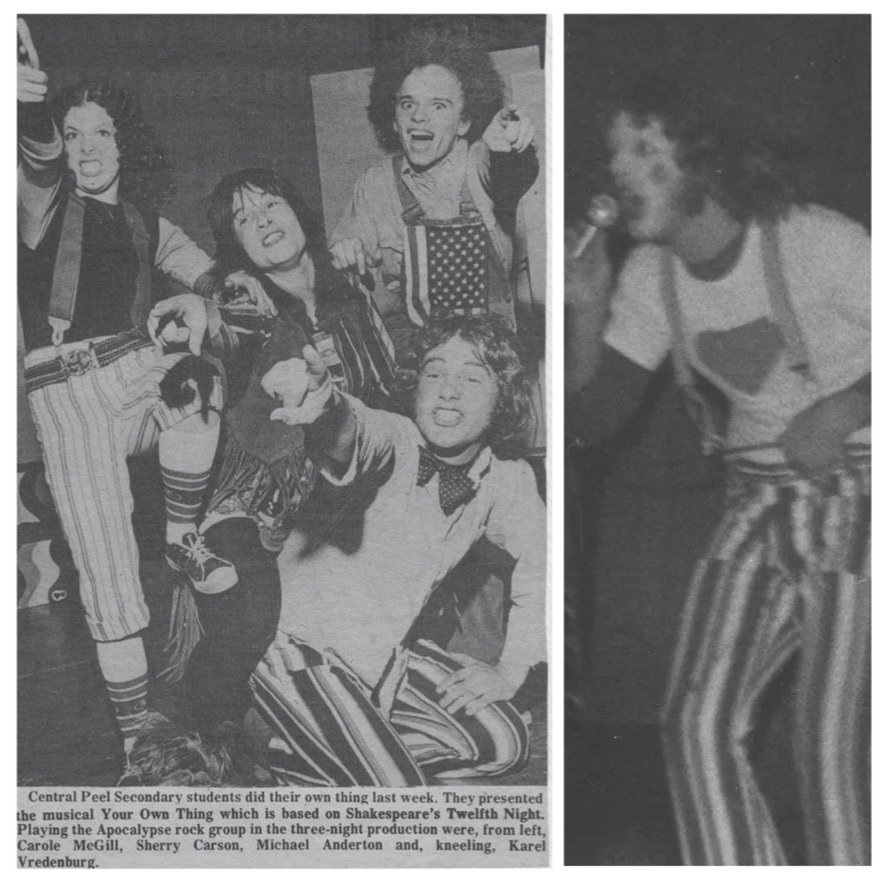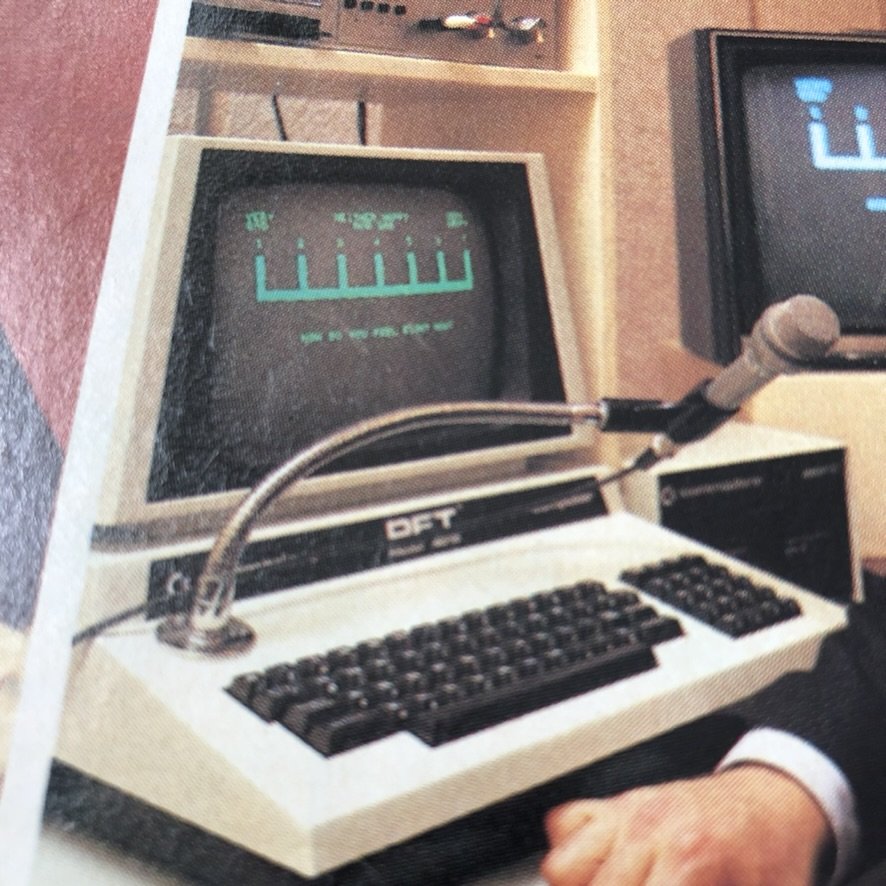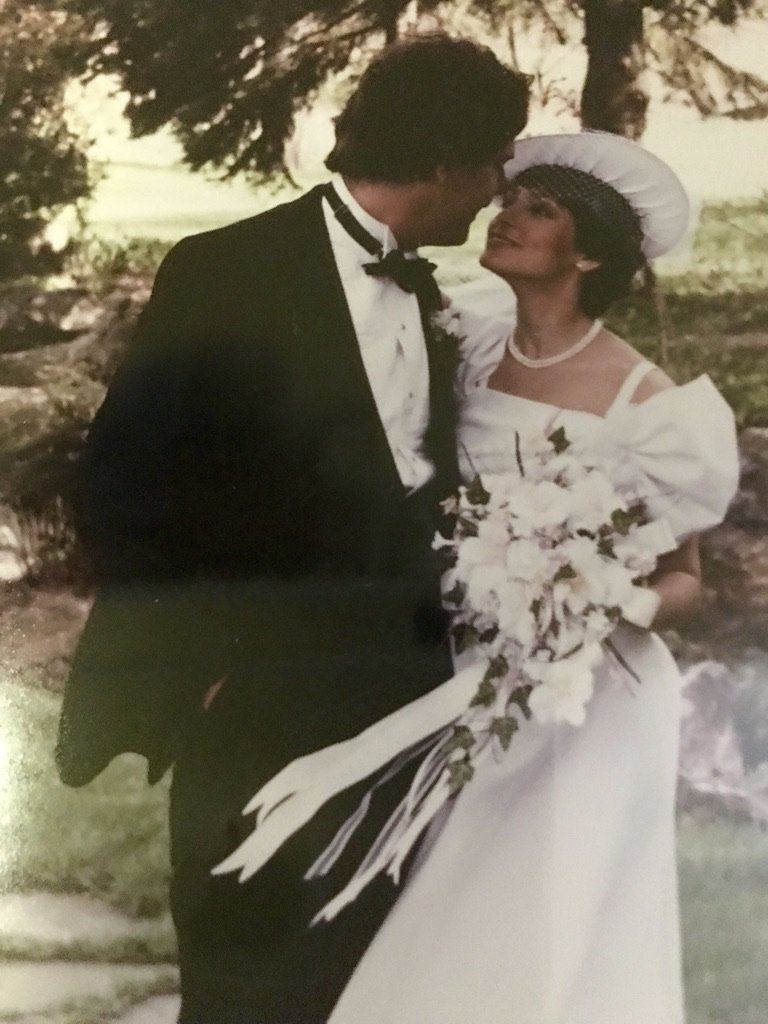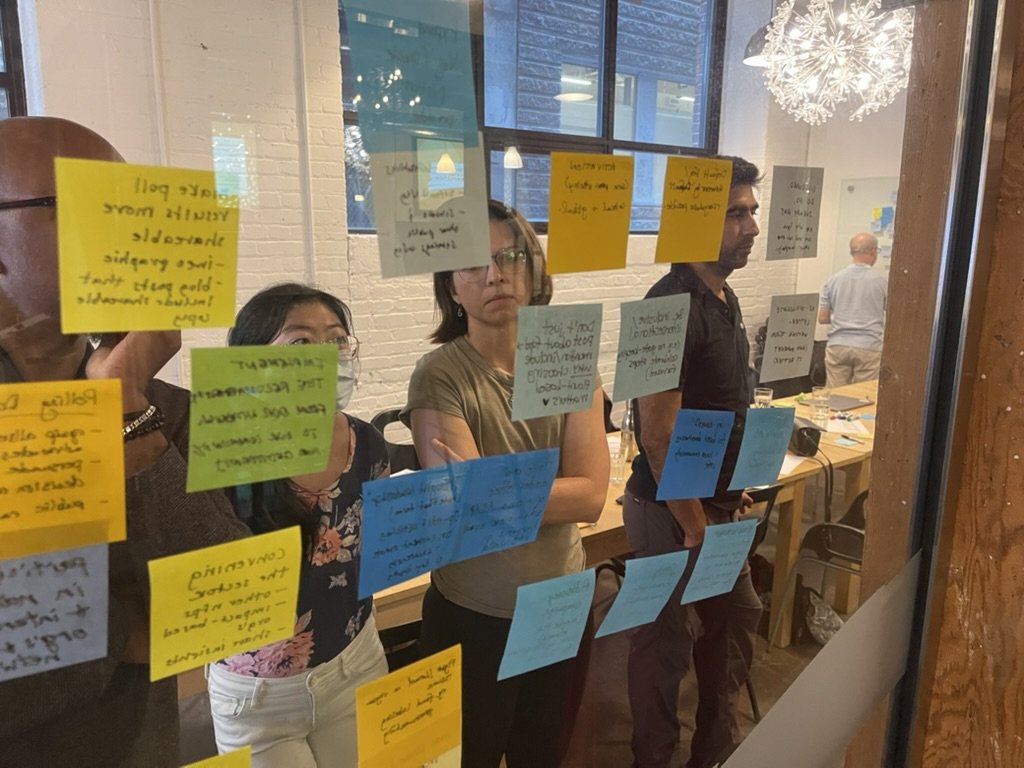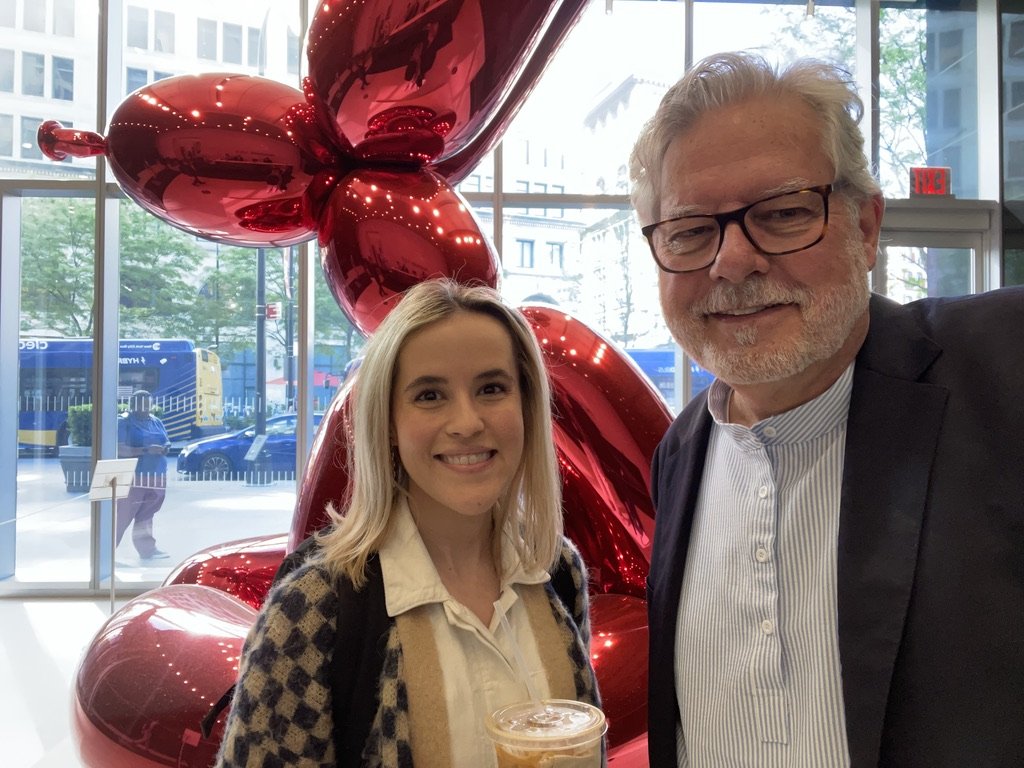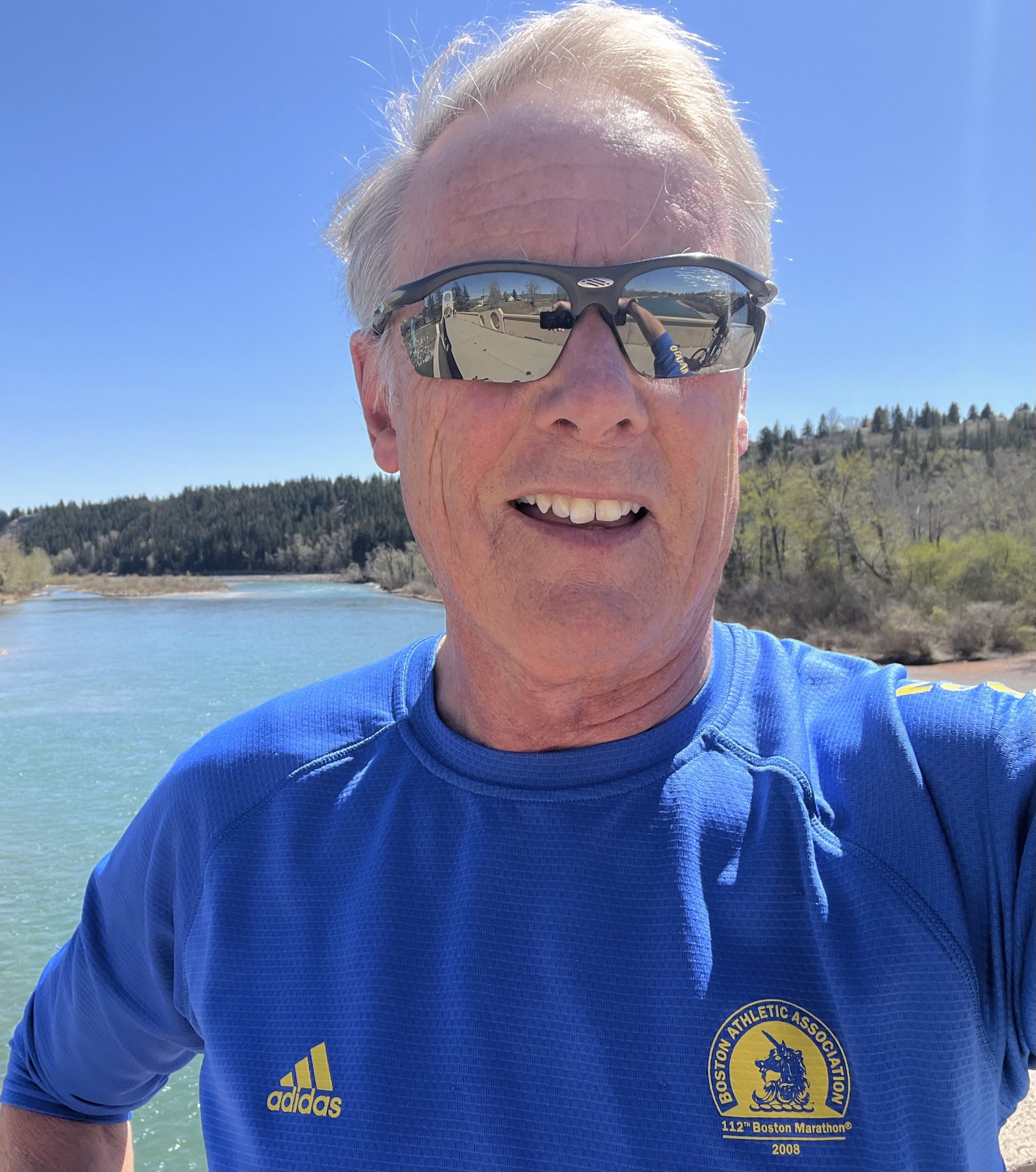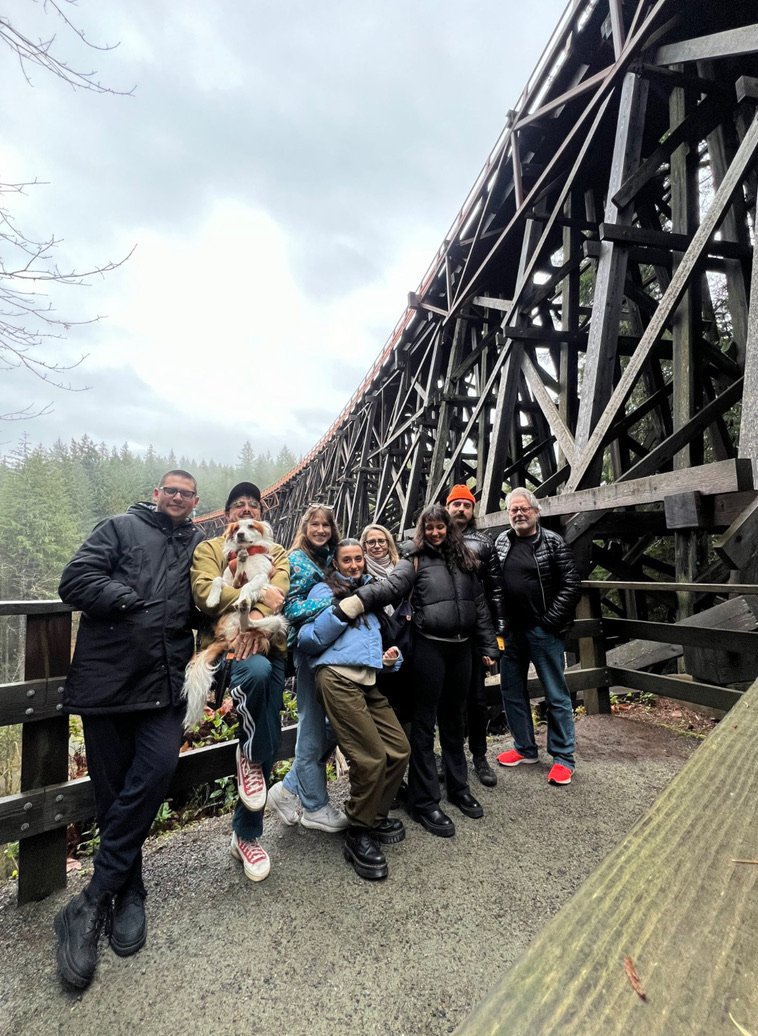I’ve rarely spoken about my age during my career. For decades, I worked alongside designers and researchers often half my age, and still do. Even my side projects tend to involve younger collaborators. I love that dynamic—and I think it’s one of the reasons I maintain a fresh, youthful perspective on life, staying curious, optimistic, and energized.
Now that I’ve retired—and there’s no hiding that I’m old enough to have done so—I’ve decided to be more open. I’m turning 70 this Saturday, May 24.
I’m deeply grateful to have reached this milestone. My father had his first heart attack at 51 and passed away a decade later. I credit my health today, in part, to living fully plant-based—but also to a life of meaning, learning, and purpose.
Through keynotes, classes, coaching, and our work at Habits for a Better World, I’ve realized how much I’ve learned over these seven decades—not just from the things I’ve done, but even more from the incredible people I’ve been lucky enough to work and live alongside.
This post is a heartfelt expression of gratitude. I’ve learned so much from so many. I can’t name everyone (that would take several books), but I hope some of those who’ve helped shape this life of mine will recognize themselves here. Please know that even if I don’t mention you directly, I carry your impact with me.
Thanks for being part of the journey so far. Here’s to learning, growing, and giving—at every age.
Top Row—my mother Gerritdina Leida Vredenburg, my brother Harrie Vredenburg and me, in elementary school, on a hockey team, playing Jesus in the musical Godspell, by brother and I signing together in our group Subway, playing guitar with the late Dario Ucheck, Second Row—getting married, my long-time Guys Afternoon Out friends, with Phil Gilbert, presenting a keynote, with Don Norman, Third Row—my former Austin IBM team, my former Toronto IBM Studio team, our Toronto-based extended family, my brother’s family, Bottom Row—my son and his partner, my kids, friend Paige Heron, friend Antonella Mintegui, my former IBM Head of Events Renee Albert and Chief of Staff Lauren Swanson, and Carly Williams, the co-founder with me of Habits for a Better World.
The Foundation—Early Life
Gerritdina Leida Vredenburg
My mother, Gerritdina Leida Vredenburg, had an outsized influence on my life. So much so that when she passed away, I recorded a special episode of my Life Habits Podcast to honor her memory and share the seven major lessons she taught me—lessons that continue to guide me to this day. Check out the podcast episode for those lessons.
My brother, Harrie Vredenburg, has been—and still is—among my closest friends. When we first arrived in Canada, it felt like the two of us against the world, navigating a new country and its unfamiliar ways. Over the years, we’ve been academic collaborators, confidants, and steady presences in each other’s lives. Check out his LinkedIn profile for more about him.
Brother Harrie and me in The Netherlands
One of the most important lessons we’ve learned is to recognize and accept how different we are in many ways—and how that honest acknowledgment has only deepened our bond. Because of the trauma I experienced during our immigration, I remember very little from the first ten years of my life and feel almost no connection to the country where I was born. But Harrie remembers, and now regularly shares stories from those early years—championing our connection to the Netherlands and helping me reclaim a part of our shared history.
Johannes Albertus Vredenburg
My father, Johannes Albertus Vredenburg, was a man of few words. From him, I learned the value of hard work—and the wisdom of knowing when to stay quiet in an interaction. He also inspired my lifelong love of music, especially classical and choral, through the sounds that filled our gezellige back room in the Netherlands, where he would sit reading the newspaper and smoking a cigar while music played softly in the background. Interestingly, this is an experience I do recall and it’s likely due to it’s emotional impact on me.
I’m particularly proud of his work as part of the resistance during the war—fighting to rid the world of fascism, hatred, and evil. He disliked boasting and spoke of it only rarely, but his quiet courage left a lasting impression on me. His example continues to inspire me to stand up against the fascism, hate, and injustice that persist in the world today.
When he caught me secretly smoking as a teenager, he didn’t scold or shame me. Instead, he quietly led by example. A heavy smoker of hand-rolled, unfiltered cigarettes, he put them down that day and never picked them up again. That single act of quiet integrity stayed with me. It inspired me to stop smoking too—and I never went back.
His example shaped more than just that one decision. It taught me the power of modeling over preaching—something I’ve tried to carry into many parts of my life, including my own role as a father.
I’m also deeply grateful for the experience of being an immigrant. As challenging as it was at times, it instilled in me a lasting empathy for anyone who is different—an empathy that has profoundly shaped how I engage with people and navigate the world. It’s one of the most formative and enduring gifts that experience gave me.
Leveling Up—School Years
When my family moved from the Netherlands to Canada, I struggled at first in school—not because of a learning disability, as some assumed, but because I didn’t yet speak English. It was my bow tie–wearing, older British gentleman of a teacher, Mr. McClean, who saw through my unwillingness to speak. He recognized the real issue and took it upon himself to teach me spoken and written English—quickly and effectively. I owe him a great deal. (Though I did later have to unlearn a few British pronunciations he passed along with the grammar.)
New City Singers Album
In high school, I founded a performance group called The New City Singers, and I loved every minute we spent performing together. But it was our teacher, Mr. Killey, who made something truly special possible. He helped me write a government Opportunities for Youth grant application—which, to our great excitement, was approved. That grant provided us with salaries, equipment, and even a van to tour across Ontario for a summer, performing for children’s camps, seniors’ homes, and the general public. That grant-writing experience served me well during subsequent stages of my life including securing a Medical Research Council Fellowship that paid for my graduate school studies.
Me playing some jazz trumpet
All through high school, I planned to pursue a career in music—specifically as a singer and performer. But my music teacher, Mr. Van Scherenberg, gently but firmly challenged that dream. He warned me that most people who earn a Bachelor of Music degree end up teaching music—and often find themselves listening to bad music all day. Although he was an exceptional teacher himself, I sensed that he may have had some regrets about the path he’d taken. His caution stuck with me. It was reinforced when I visited the University of Toronto’s Faculty of Music and spoke with students there, a year before I needed to apply. They described spending most of their days alone in small practice rooms, and confirmed that performance-focused careers outside of teaching were extremely rare. That experience taught me a lesson I still apply today: before making a big decision, seek evidence, ask for honest advice, and look ahead to the likely reality—not just the ideal. I’ve subsequently learned to call that process foresighting, and it has guided me through many pivotal choices in life.
Me with my musical friends and me as Jesus in Godspell
Another teacher who had a profound impact on me was Val Grabove. Interestingly, I only ever referred to most of my teachers by their last names, but with Val, it was always her first name—that speaks to the connection she fostered. She was my high school theater arts teacher and the director of our plays and musicals. The lessons she taught me have stayed with me for life. Thanks to Val, I learned practical performance wisdom I still draw on every time I step on stage: don’t change anything major right before a performance, take a moment to scan and acclimate to the audience before walking out, and trust—truly trust—your fellow performers. I spent a lot of time performing in high school, whether at Music Nights or in musicals—including playing the lead role of Jesus in Godspell. I still cherish those experiences with fellow performers like Carol McGill, Sam Caruso, and Kevin Frank. That time in my life helped shape not only my voice but my confidence, presence, and sense of ensemble—all of which have carried into every stage I’ve stood on since.
The band Subway
My brother and I also had a band called Subway, where we mostly performed folk music. The band included some of our close friends—Libby Keenan, Dennis Johnson, Bryan Hammer, and Vanessa Hammer. While Harrie and I shared vocals, I also took on a new role at the time: playing bass guitar. It taught me how to contribute from the background—supporting the sound without being front and center—and I’ve carried that lesson into many aspects of my life since.
In addition to school performances, I also played in a professional house band every Saturday night. While it was a heady experience being a paid musician at that age, I quickly came to see some of the less glamorous sides of that life—like never being able to go out with my friends on performance nights or celebrate special occasions like New Year’s Eve. I also witnessed some of the grittier aspects of the business—for example, venues turning up the heat later in the evening to encourage more drinking and drive up alcohol sales. I learned the importance of having a plan to avoid drinking and driving, especially since band members were often given free drinks all night. I also picked up a trick for wrapping up a show that I’ve applied more broadly in life: when encore demands wouldn’t stop, I would close the night by singing the national anthem—a clear and respectful signal that the performance was truly over.
Dario and me
One member of that band, Dario Ucheck, left a lasting impression on me. Not only was he a gifted musician, but also an exceptional athlete. When he was diagnosed with cancer, he made the courageous decision to have his leg amputated where the tumor had developed. Determined to explore every possible path to healing, he sought out faith healers across the Northern United States—and I had the privilege of driving him to those visits. Watching Dario face his own mortality taught me more than I could have imagined. He began to savor life with extraordinary intensity—approaching each day and each experience with curiosity, humility, and gratitude. I remember how, when someone would request a song he didn’t know, he wouldn’t try to fake it—he’d simply say: “I don’t know that one—can you teach it to me?” That openness defined him. Whenever a new experience presented itself, he would engage with it fully—almost with a sense of reverence. Though cancer eventually took his life, his lessons have stayed with me and regularly provide me guidance.
Next Level Learning—University Years
As a first-year undergraduate, I would write out my assignments by hand and pay a fellow student to type them up—because I didn’t know how to type. The cost, along with the need to hand over papers a week in advance, motivated me to take a summer typing course at a community college beautifully situated on the shores of Lake Ontario.
The typewriter I learned on except it didn’t have letters on the keys
I turned out to be the only man in the class. The women were mostly receptionists who, as I later learned, had been hired for their appearance and were now expected to learn a useful skill—how to type—this was, after all, 50 years ago. That environment pushed me to focus intensely on learning and improving, especially with weekly tests that publicly ranked each student’s typing speed and accuracy. I was proud (and a bit surprised) to be at the top of the class every week.
I’ve been thankful ever since. That one decision—to learn to type well—has paid off so well, especially now, when much of my work and creative life still flows through a keyboard.
A Commodore PET that I ran my experiments on in graduate school
My undergraduate and graduate student supervisor at the University of Toronto—where I pursued Cognitive Science and Clinical Psychology instead of music—was Professor Lester Krames. His lectures were always in high demand, thanks to his remarkable storytelling style. From him, I not only gained deep academic insights but also honed the storytelling skills I still use every day in teaching, keynotes, coaching, and design work.
I also had the privilege of serving as his Research Assistant, which included managing a human research lab at the university. That experience sparked my fascination with user experience research and design—ultimately shaping my entire career in those disciplines at IBM and beyond. Check out my blog post about that experience.
Erin and my wedding day
And it was in that very lab that I met Erin O’Brien, then an undergraduate student, who would later become my wife and life partner. We conducted research studies together, co-authored journal articles, drove to campus each day, and quickly became the best of friends, romantic partners, and ultimately, life partners. Erin has continued in the discipline and has served as an Editor for the American Psychological Association for many years. That chapter of my life marked not just the beginning of a profession—but the start of a profound personal journey as well.
The University of Toronto also connected me with others who would remain important throughout my life. One of them was Rick Hacket, a fellow undergraduate student at the time. Years later, we reconnected when I began teaching in the Executive MBA program at McMaster University—where he, too, was a faculty member.
Having Impact—Work & Change-making
Paul Smith
It was one of my friends from graduate school—Paul Smith—who I have to thank for initiating my career at IBM in research and design. During my doctoral work, I had completed eight additional studies beyond my dissertation, driven by a strong interest in exploring and mitigating gender differences in psychophysiological responses to computers. I developed a novel approach to user interface design, compared it to conventional designs, and found that my method performed significantly better.
I presented that research at a conference, which led not only to professional recognition but also to interviews in the press. Paul, who was then working at IBM, happened to hear one of those interviews and called me to ask, “Have you ever considered working for IBM?” I replied, “No, but I’m willing to consider it.”
That single conversation opened the door to what became a 36-year career at IBM. I’ve shared more about that journey in a previous post on this blog, but it all began with that unexpected call—from a friend who helped shift the course of my life.
I’d also like to call out a few colleagues and leaders I worked with over the years who left a lasting impression on me.
My first manager, Dave Pinkham, was a stickler for timeliness. I quickly adopted his approach, and throughout my career, my teams learned how important it was to be dependable and never keep others waiting.
Tony Temple, the VP under whom I led the transformation of User-Centered Design across IBM, taught me the importance of creating prototypes—of making ideas tangible early and often.
Bob Biamonte, another VP I reported to, wanted to promote me to Director of Design—only to discover that no such role existed at IBM at the time. That led to an important lesson in being resourceful: I worked with HR to help define and create the position myself.
Rod Smith, VP and IBM Fellow, offered one of the most enduring pieces of leadership advice I’ve received: don’t tell senior executives that the sky is falling—focus on the solution. That shift in mindset served me well throughout my executive career.
Phil Gilbert and me
Phil Gilbert, IBM’s General Manager of Design, had an outsized impact on me—and, in many ways, we influenced each other. His impact was so significant that I dedicated a blog post as a personal tribute to him. Check out that blog post here.
Katrina Alcorn and me
Katrina Alcorn, who succeeded Phil as General Manager of Design, was the best manager I ever had. She led with empathy, stayed closely connected, and empowered me in ways that deeply resonated. She also promoted me to Vice President, and I remain grateful for her belief in me and her leadership. I wrote a personal reflections blog post about Katrina and my team members previously.
Ana Manrique, Joan Haggarty, Sandra Tipton, Craig Moser, and Haidy Perez-Francis
Finally, my last manager at IBM, Justin Youngblood, supported my desire to conclude my long tenure with a six-month “farewell tour” of our design studios—giving me the chance to say goodbye in person and share lessons from my 36-year journey. I wrote a blog post detailing the lessons and advice I shared on that farewell tour and another sharing my career Q & A interview with Eleanor Bartosh.
I’d also like to give a shoutout to my Vice President of Design colleagues for supporting each other during some difficult times. We also had some great times together. I particularly appreciated the camaraderie and friendship. Thanks to Ana Manrique, Sandra Tipton, Craig Moser, and Haidy Perez-Francis. Also in the picture is dear colleague and friend Design Principal Joan Haggarty. And not in the picture, Shani Sandy, Joni Saylor, Robert Uthe, and Jeff Neely.
I’m also deeply grateful to the many talented managers and leaders who reported to me over the years—and to the 3,000 designers and 330 researchers I had the privilege of working alongside. It was an honor to be part of such a passionate, creative, and impactful community.
Teaching my EMBA class module
In addition to my work at IBM, about ten years ago I was approached by Len Waverman and Michael Hartmann, then Dean and Associate Dean of the DeGroote School of Business at McMaster University. They told me they had funding from Mr. DeGroote to develop a new educational program at the intersection of design, business, and healthcare—and asked if I would help develop and teach it. I agreed, and was appointed Industry Professor. That initial collaboration grew into an ongoing academic partnership, and I’ve especially valued continuing to work with Michael Hartmann on several adjacent programs and initiatives over the years.
Nicole Fich and Nital Jethalal together with the rest of the Board of Directors in a workshopping session
During the pandemic, I joined the Board of Directors of VegTO, where I served as Vice President alongside President Nital Jethalal and Treasurer Nicole Fich. Together, we led a significant transformation of the 75-year-old organization—rebranding it, overhauling key systems, and revitalizing the annual VegTO Fest. Both Nital and Nicole became and remain close friends, and I’m deeply grateful for the work we accomplished—and the bond we built—during such a challenging time.
Although I had previous board experience and teach innovation and creative problem solving at the Director’s College, it was my hands-on role co-leading the VegTO nonprofit that gave me the practical grounding and insight I now draw upon in co-leading my current nonprofit.
Don Norman and me
Another initiative that has had a major impact on me was co-founding the Future of Design Education Initiative with legendary design thinker Don Norman. Don, now in his 90s, taught me—by example—that you’re never too old to make a difference. He remains one of the most passionate, productive, and visionary people I know. His approach to retirement was an inspiration to me to not slow down but instead redirect my full-time focus toward purpose. That’s exactly what I’ve embraced. Check out the website describing our initiative and the resulting special issue journal with the curricular guidance. And Don and I have Meredith Davis for so expertly crafting that final deliverable.
Srini Srinivasan and Rebecca Breuer
At the beginning of the pandemic, I partnered with Srini Srinivasan, President of the World Design Organization, and Rebecca Breuer, Executive Director of Design for America, to launch the COVID-19 Design Challenge. Together with 225 volunteer designers and researchers, we mobilized quickly—and in just three weeks, we launched a major social media campaign to promote safe behaviors, along with several other impactful projects. Check out the website for more details.
I want to thank Srini, Rebecca, and every one of our incredible volunteers—not only for their contributions, but for helping to prove that when designers and researchers come together with purpose and urgency, we can create outsized impact using our skills and craft.
Carly Williams and me
After retiring from IBM, I teamed up with award-winning filmmaker Carly Williams to co-found and co-lead the nonprofit Habits for a Better World. Carly and I are kindred spirits and we share the leadership of our extraordinary global community of 300 volunteer researchers, designers, and filmmakers equally. This initiative and working with Carly has been, and continues to be, one of the most fulfilling experiences of my life. Carly is less than half of my age but she has taught me so much. We both also so appreciate the amazing volunteers who joined our nonprofit and who have done such great work. Thank you!
HUMAN CONNECTION—ENDURING FRIENDSHIP
Rick Sobiesiak, Scott Lewis, Mike Fischer, Paul Smith, and Bob Duchnicky
I’ve been fortunate to have some truly amazing friendships over the course of my life. Several began during my earliest days at IBM—Paul Smith, Bob Duchnicky, Mike Fischer, Rick Sobiesiak, and Scott Lewis—and those friendships have endured for decades. In fact, 20 years ago, I started something we called Guys Night Out (GNO) as a way to stay connected. Remarkably, the GNO is still going strong today—with the exact same group of friends.
While I consider many of my former colleagues at IBM to be friends—too many to name—two of my closest collaborators stand out: Lauren Swanson and Renee Albert. Lauren served as my Chief of Staff, and Renee was our Events, Education, and Community Lead. I worked with both of them almost daily during my final years at IBM, and I continue to count them among my friends.
Lauren Swanson and me
I appreciated Lauren for her thoughtful approach to work-life boundaries. She modeled a healthy separation between professional and personal time, and I made a point of respecting that—scheduling messages to arrive during business hours and only texting her on a weekend in cases of true urgency. She was so kind and approachable that many people on our team affectionately referred to her as the “Karel Whisperer.” When someone didn’t feel comfortable bringing something directly to me, they’d often go to Lauren first. In those moments—and many others—she helped me gain perspective I might have otherwise missed. Lauren is also a phenomenal writer. She edited pretty well everything I wrote and I learned to be a better writer as a result. She also did an amazing job of discerning my voice and even authored blog posts for me. Lauren was my confidant, a true friend, and I have her to thank for my enjoying work the last few years at IBM.
Renee Albert and me
Renee joined our inner circle a bit later, but the three of us quickly became an incredibly effective team. I particularly admired her ability to make diversity and inclusion actionable. She led the development of our Leaders Playbook as part of our Racial Equity in Design initiative, helping to turn values into meaningful, measurable change. While I was grateful for all 330 team members I had the privilege of leading at IBM, Lauren and Renee were—and still are—extra special to me. Check out my blog post dedicated to thanking Lauren and Renee.
Paige Heron and me
Paige Heron first entered my life as a close friend of my daughter’s, so I’ve known her for many years. Over time, I became a mentor to her through several of her business ventures, and more recently, she joined me as a co-host on the Life Habits Podcast.
Paige lives with hypermobile Ehlers-Danlos syndrome (hEDS), a condition that has progressively impacted her body and more recently made it increasingly difficult for her to work. As a result, she had to significantly scale back her role on the podcast. I’ve driven her to many medical appointments for several years now and serve as her advocate in dealing with physicians and other medical staff.
Seeing what my dear friend endures because of this condition has deepened both my empathy and my gratitude. It strengthens my resolve to support her however I’m able—and makes me all the more appreciative of the good health I continue to enjoy.
Mandy Kloppers
I’ve been hosting the Life Habits Podcast for over 17 years now, and about a decade ago, I came across some thought-provoking posts from a UK-based psychologist on what was then called Twitter. Intrigued, I reached out and invited her to be a guest on the podcast. That psychologist was Mandy Kloppers—and what began as a professional connection soon grew into both a recurring collaboration and a meaningful friendship. Mandy has since joined me for many episodes, and although most of our friendship has unfolded over text and the occasional Zoom call, we did manage to meet in person during one of my layovers in London, where she’s based. I’ve always admired her approach to life and the grounded, practical wisdom she brings to dealing with life’s challenges.
Marie-Josée Shaar (MJ)
Another frequent podcast guest—and now dear friend—is Marie-Josée Shaar, or MJ, as she goes by. Originally from Montreal and now living in the U.S., MJ brings an infectious positivity to everything she does. Every one of her appearances on the podcast has been a delight. She has a rare combination of warmth and rigor—whenever I floated an idea, she would dive into the research, synthesize it, and return with the most insightful and actionable summary imaginable.
I’m thrilled that MJ is now also part of Habits for a Better World, co-leading a team focused—fittingly—on love and kindness. Her passion for research and impact continues to inspire me.
Antonella Mintegui
Antonella Mintegui, who lives in Montevideo, Uruguay, is what some would call an “online friend”—but in truth, she and I probably know each other better than many of my in-person friends. We first connected when I came across a post she had written about some challenges she was facing, and I reached out to offer support. That initial gesture sparked a meaningful friendship that has only deepened over time.
I admire Antonella’s unassuming, gentle approach to inspiring others to adopt more ethical lifestyle choices, and I truly enjoy our regular conversations—whether by message or over Zoom. When people suggest that online friendships aren’t as real or valuable as those formed in person, I understand what they mean—but I also know they’re often wrong. In Antonella’s and my case, the connection we’ve built is proof that deep, authentic friendship can flourish entirely online—and sometimes, be even better because of it.
And of course, there are many mutual friends of Erin and me whom we deeply appreciate, though they are too numerous to mention.
THE CORE—FAMILY
Brother Harrie’s text message
I mentioned my mother, father, and brother at the beginning of this post. While both of my parents have passed away, I remain deeply connected with my brother, Harrie, and truly enjoy the occasional visits with his wonderful family. Harrie and I text almost every day, usually sharing whatever exercise we’ve done that day. And every now and then, we have a good old-fashioned phone call—often while we’re both out walking or running. This picture is a typical example of what he shares with me.
Rowan, Ares (with Bambi), Emma, Val, Erin, Xeena, Elliot, and me. Not in the picture—Noah.
I’m also incredibly thankful for my wife and life partner, Erin O’Brien, and for the family we’ve built together: Elliot and his partner Val, Emma and her partner Ares, Rowan and his partner Xeena, and our youngest, Noah. I cherish the family traditions we’ve created—like taking vacations together in different parts of the world, our long, thoroughly enjoyable Sunday evening FamJam Zoom calls that often stretch three or four hours, and the fun text message exchanges on our FamJam text group. I also love the local tradition of gathering to watch F1 races and sharing Sunday dinners at the family home.
I’m so incredibly proud of what amazing people our kids have become, Elliot, an accomplished and sought-after designer, Emma an impactful sustainability change-maker, Rowan, a respected and innovative Engineer, and Noah, a values-driven professional helping to bring fresh, organic produce to people’s doors.
As a father, one of the things I value most is seeing how much our kids care for one another—and I’m especially grateful for the wonderful partners they’ve chosen. Xeena, Val, and Ares are each truly part of the family, not just in name but in spirit.
FINAL THOUGHTS
I hadn’t set out to write something this long—it’s ended up reading more like a memoir. But I did want to take the time to reflect, to celebrate, and to thank the many people who have made my life so rich and meaningful. Turning 70 feels, in some ways, incredibly old. And yet, I feel like I’m just getting started. I look forward to many more years of learning, creating, and collaborating with more amazing people.







